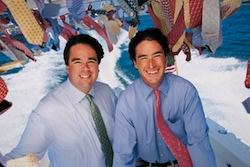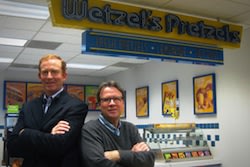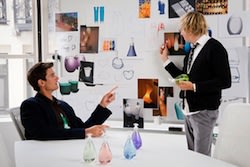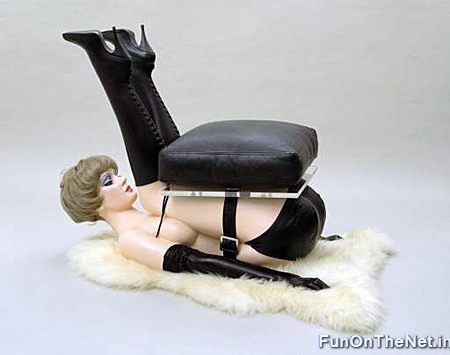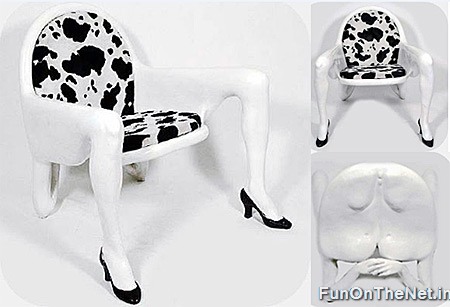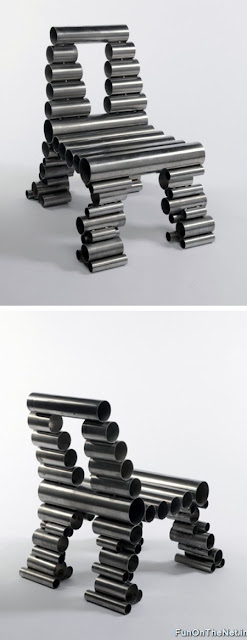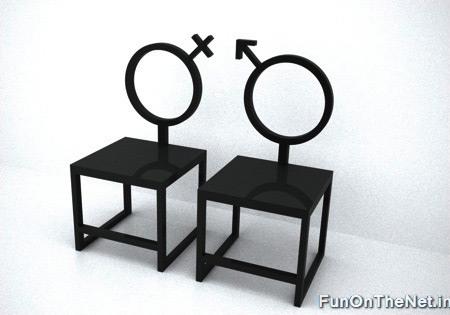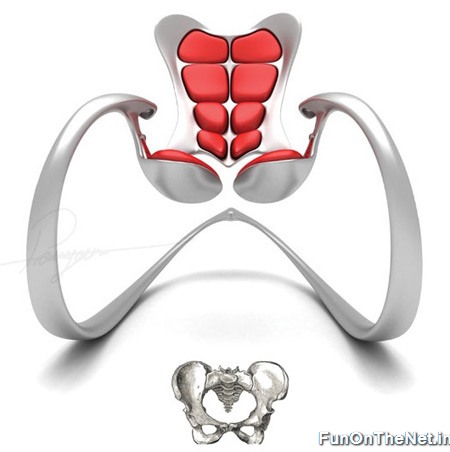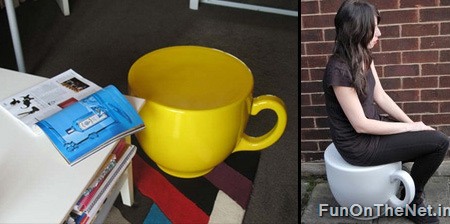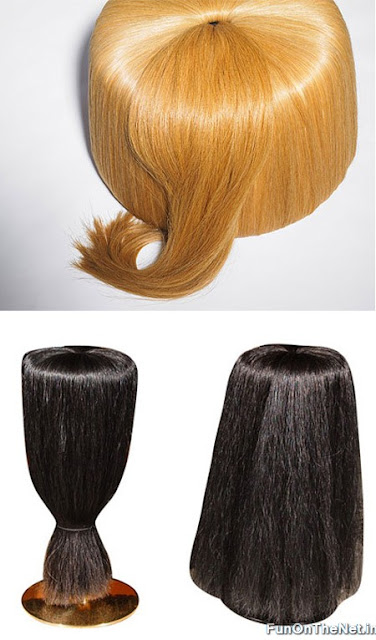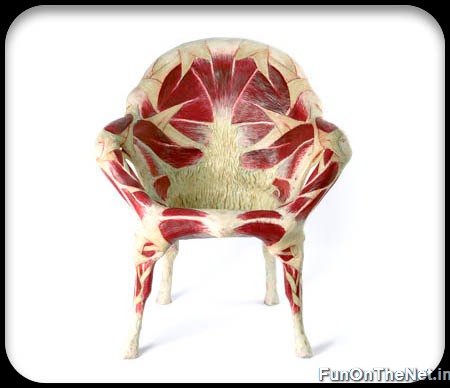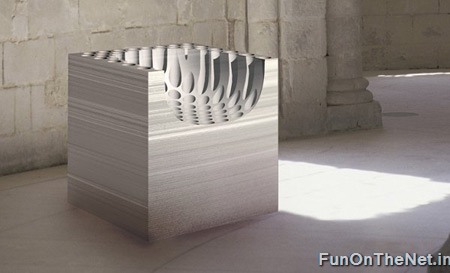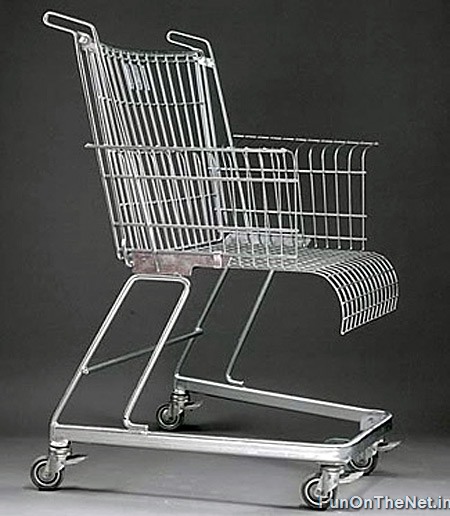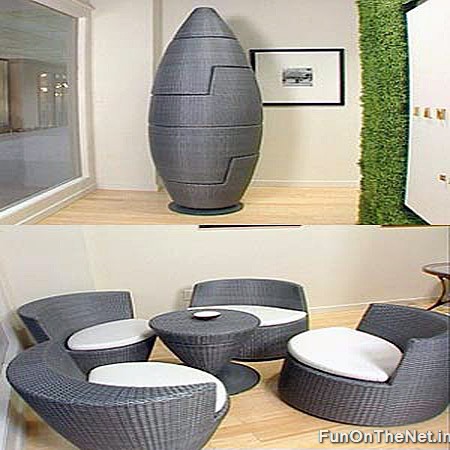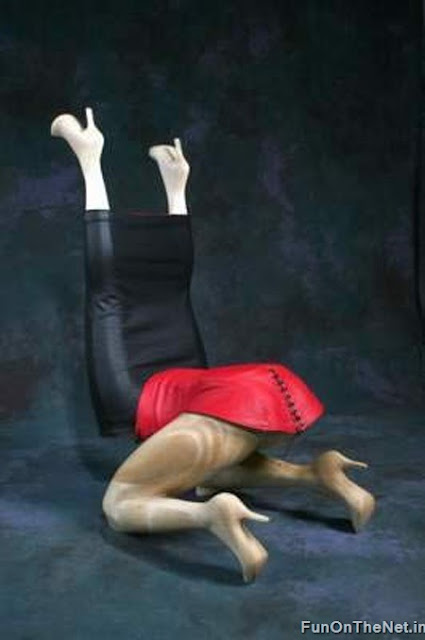Have
you ever wished you could just quit your job and follow your dream?
While reality gets in the way for many, there are some who have taken
the chance and ditched their steady paychecks in order to turn their
business ideas into reality.
Success is by no means guaranteed, but for the lucky ones the decision to say “I quit” has been handsomely rewarded. With hard work and determination, they’ve been able to turn their ideas into booming businesses.
The following people quit their jobs and went on to make millions, whether it was creating personal wealth or revenue for their company.
Shep and Ian Murray, Vineyard Vines
Brothers Shep and Ian Murray were miserable sitting behind desks at their corporate jobs in Manhattan. So in 1998, Shep Murray, an advertising account executive, and Ian Murray, who worked at a small public relations firm, quit their jobs within 10 minutes of each other. They took cash advances on their credit cards and, despite being told how “dumb” their idea was, started Vineyard Vines — a tie company based on Martha’s Vineyard. Or, as the brothers like to say, they decided to trade in their business suits for bathing suits by selling ties so they wouldn’t have to wear them.
At first they sold their ties one at a time out of their backpacks, on the beach, on boats and in bars. They sold out of 800 ties within the first week. They quickly re-ordered, paid off their debt and moved into their first office. More than a decade later, the business is now an entire clothing line.
There are now 18 freestanding Vineyard Vine retail stores around the country, and the line can be found in about 500 stores. The company is projecting about $100 million in sales for 2011.
Rick Wetzel and Bill Phelps, Wetzel’s Pretzels
Rick Wetzel and Bill Phelps were working for Nestle when the concept for Wetzel’s Pretzels was born. The two were on a business trip when Wetzel told Phelps about an idea his wife had — to make big, soft pretzels to sell at the mall. That night, they sat at a bar and drew out their business plan on napkin.
Wetzel sold his Harley Davidson to help raise funds for the fledgling business, which they started in their spare time. They brought in a partner to help create the recipe in Phelps’ kitchen, and when it came time to open shop they persuaded a mall landlord to come to the house to try their creation. The landlord liked what he tasted and rented Wetzel’s Pretzels its first store.
That was 1994. About a year later, Wetzel and Phelps got their lucky break when they were offered a severance package from Nestle. They opened up several more stores before deciding to franchise in 1996. There are now 250 stores nationwide, with locations set to open in Japan and India this year. System-wide sales are more than $100 million and same-store sales were up 9 percent in 2011.
Terry Finley, West Point Thoroughbreds
Terry Finley was finishing his military service in 1990 when he and his wife, Debbie, bought a $5,000 horse. The horse, named Sunbelt, won its first race, and Finley was hooked. He quit his insurance job and took a chance on his passion. Armed with credit cards and personal savings, he started West Point Thoroughbreds with his wife.
“Taking what you love to do and making a profession out of it is so much better than just working to make a living,” Finley says .
West Point Thoroughbreds now buys 20 to 25 horses a year, forming groups of investors who can profit when the horses win, breed and sell. Since 2007, its horses have won more than 20 percent of their races, with purses totaling more than $16 million and counting. Annual sales are near $7 million.
Dana Sinkler and Alex Dzieduszycki, Terra Chips
Dana Sinkler and Alex Dzieduszycki were working for star chef Jean-Georges Vongerichten at his four-star restaurant, Lafayette, in New York when they decided to strike out on their own and start a catering business. They were looking to create a signature dish to serve at the bar, since it’s the place people first visit at a party. But they wanted something different from the elaborate crudité platters that were popular at the time. So in 1990, they experimented with frying different vegetable roots in the kitchen of Sinkler’s tiny apartment and struck gold.
The vegetable chips were a hit, and soon the pair brought Terra Chips into stores. In 1995, a private equity group bought 51 percent of the company, and in 1998 Hain Celestial bought Terra Chips as part of an $80 million bundle deal that included three other companies. At the time, Dzieduszycki says, Terra Chips had $23 million in annual sales.
Sinkler and Dzieduszycki have moved on to new ventures. Sinkler has started a new restaurant called Hubee D’s. Dzieduszycki began Julian’s Recipe, a frozen waffle line.
Adam Lowry and Eric Ryan, Method
Adam Lowry was working as a climate scientist and Eric Ryan was in advertising when they decided to leave their jobs to develop the environmentally friendly cleaning product company, Method. At the time there weren’t many choices when it came to cleaning products that didn’t contain harsh chemicals. So the two childhood friends did their research, and Lowry even mixed chemicals in the sink of their apartment. They maxed out their credit cards, scrounged together $200,000 from family and friends and started Method in 2000.
Method has become one of the fastest-growing private companies in America, with over 100 products — from hand soaps to dish soaps to bathroom cleaners. The company has gross revenue north of $100 million.
Success is by no means guaranteed, but for the lucky ones the decision to say “I quit” has been handsomely rewarded. With hard work and determination, they’ve been able to turn their ideas into booming businesses.
The following people quit their jobs and went on to make millions, whether it was creating personal wealth or revenue for their company.
Shep and Ian Murray, Vineyard Vines
Brothers Shep and Ian Murray were miserable sitting behind desks at their corporate jobs in Manhattan. So in 1998, Shep Murray, an advertising account executive, and Ian Murray, who worked at a small public relations firm, quit their jobs within 10 minutes of each other. They took cash advances on their credit cards and, despite being told how “dumb” their idea was, started Vineyard Vines — a tie company based on Martha’s Vineyard. Or, as the brothers like to say, they decided to trade in their business suits for bathing suits by selling ties so they wouldn’t have to wear them.
At first they sold their ties one at a time out of their backpacks, on the beach, on boats and in bars. They sold out of 800 ties within the first week. They quickly re-ordered, paid off their debt and moved into their first office. More than a decade later, the business is now an entire clothing line.
There are now 18 freestanding Vineyard Vine retail stores around the country, and the line can be found in about 500 stores. The company is projecting about $100 million in sales for 2011.
Rick Wetzel and Bill Phelps, Wetzel’s Pretzels
Rick Wetzel and Bill Phelps were working for Nestle when the concept for Wetzel’s Pretzels was born. The two were on a business trip when Wetzel told Phelps about an idea his wife had — to make big, soft pretzels to sell at the mall. That night, they sat at a bar and drew out their business plan on napkin.
Wetzel sold his Harley Davidson to help raise funds for the fledgling business, which they started in their spare time. They brought in a partner to help create the recipe in Phelps’ kitchen, and when it came time to open shop they persuaded a mall landlord to come to the house to try their creation. The landlord liked what he tasted and rented Wetzel’s Pretzels its first store.
That was 1994. About a year later, Wetzel and Phelps got their lucky break when they were offered a severance package from Nestle. They opened up several more stores before deciding to franchise in 1996. There are now 250 stores nationwide, with locations set to open in Japan and India this year. System-wide sales are more than $100 million and same-store sales were up 9 percent in 2011.
Terry Finley, West Point Thoroughbreds
Terry Finley was finishing his military service in 1990 when he and his wife, Debbie, bought a $5,000 horse. The horse, named Sunbelt, won its first race, and Finley was hooked. He quit his insurance job and took a chance on his passion. Armed with credit cards and personal savings, he started West Point Thoroughbreds with his wife.
“Taking what you love to do and making a profession out of it is so much better than just working to make a living,” Finley says .
West Point Thoroughbreds now buys 20 to 25 horses a year, forming groups of investors who can profit when the horses win, breed and sell. Since 2007, its horses have won more than 20 percent of their races, with purses totaling more than $16 million and counting. Annual sales are near $7 million.
Dana Sinkler and Alex Dzieduszycki, Terra Chips
Dana Sinkler and Alex Dzieduszycki were working for star chef Jean-Georges Vongerichten at his four-star restaurant, Lafayette, in New York when they decided to strike out on their own and start a catering business. They were looking to create a signature dish to serve at the bar, since it’s the place people first visit at a party. But they wanted something different from the elaborate crudité platters that were popular at the time. So in 1990, they experimented with frying different vegetable roots in the kitchen of Sinkler’s tiny apartment and struck gold.
The vegetable chips were a hit, and soon the pair brought Terra Chips into stores. In 1995, a private equity group bought 51 percent of the company, and in 1998 Hain Celestial bought Terra Chips as part of an $80 million bundle deal that included three other companies. At the time, Dzieduszycki says, Terra Chips had $23 million in annual sales.
Sinkler and Dzieduszycki have moved on to new ventures. Sinkler has started a new restaurant called Hubee D’s. Dzieduszycki began Julian’s Recipe, a frozen waffle line.
Adam Lowry and Eric Ryan, Method
Adam Lowry was working as a climate scientist and Eric Ryan was in advertising when they decided to leave their jobs to develop the environmentally friendly cleaning product company, Method. At the time there weren’t many choices when it came to cleaning products that didn’t contain harsh chemicals. So the two childhood friends did their research, and Lowry even mixed chemicals in the sink of their apartment. They maxed out their credit cards, scrounged together $200,000 from family and friends and started Method in 2000.
Method has become one of the fastest-growing private companies in America, with over 100 products — from hand soaps to dish soaps to bathroom cleaners. The company has gross revenue north of $100 million.

